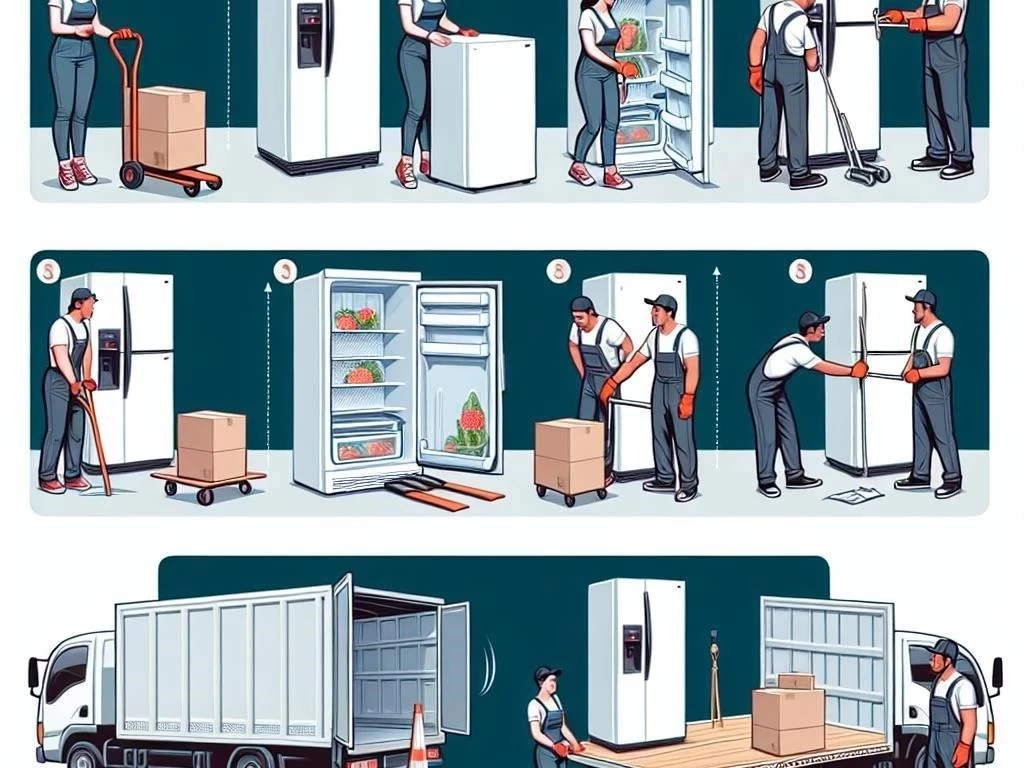
Transporting a refrigerator requires careful planning, proper equipment, and safety measures to ensure secure appliance transport and prevent damage during relocation. Follow these guidelines.
Understanding the Importance of Proper Transportation
Transporting a refrigerator safely is crucial for maintaining its functionality and avoiding costly damage. Proper transportation ensures that the appliance remains upright, preventing potential issues with the compressor and coolant. Additionally, securing the fridge during transit protects it from impacts, vibrations, and shifting loads. This careful handling is essential for preserving the integrity of the appliance and ensuring it operates efficiently after installation. Understanding these factors contributes to transportation safety and promotes effective appliance handling throughout the moving process, leading to a smoother relocation experience for everyone involved.

Preparing for the Move

Preparation is essential for transporting a refrigerator successfully. First, gather all necessary moving supplies, such as a refrigerator dolly, fridge straps, and padding materials. Next, empty the fridge completely, removing all food and beverages to avoid spillage. After emptying, clean and defrost the appliance thoroughly, ensuring it is free of ice and moisture. This step is vital to prevent leaks during transport. Finally, familiarize yourself with truck loading tips and appropriate securing methods to guarantee safe transportation, enhancing your overall moving experience and ensuring the fridge remains undamaged throughout the journey.
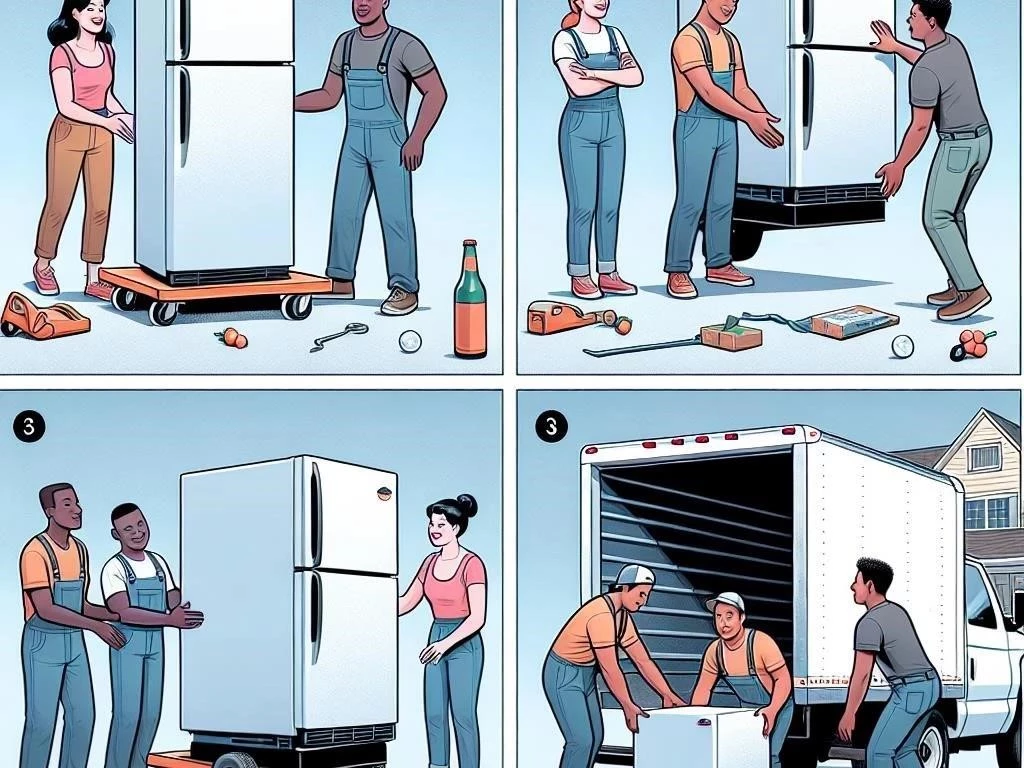
Gathering Necessary Moving Supplies
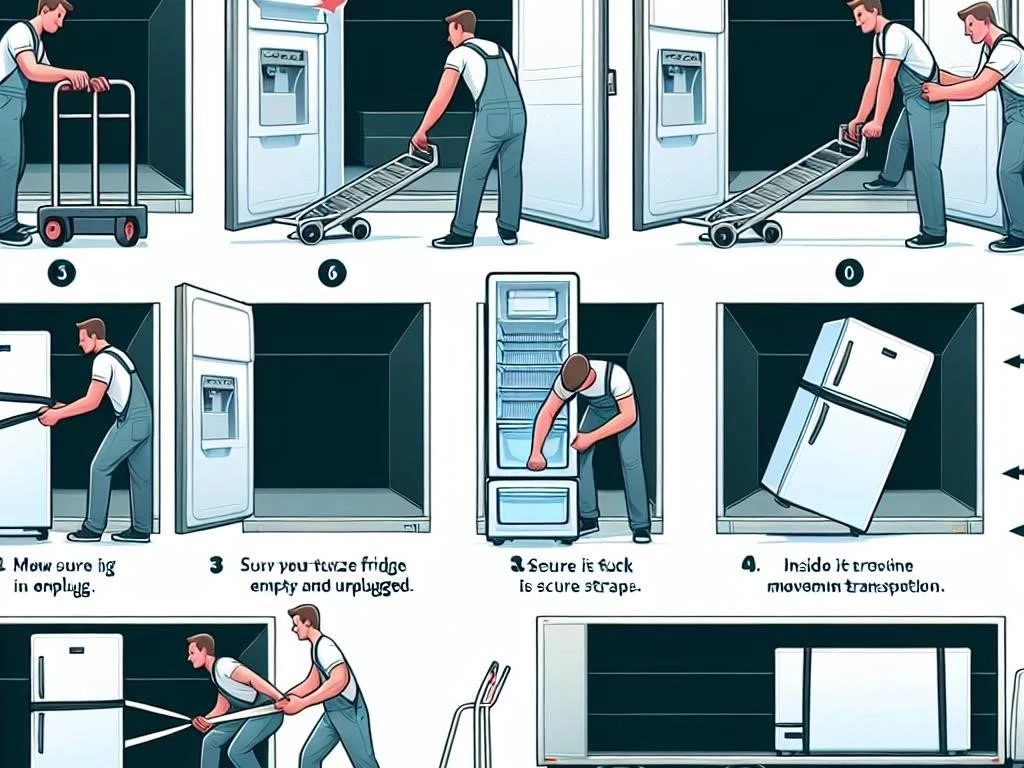
Collecting the right moving supplies is vital for transporting your refrigerator safely. Essential items include a refrigerator dolly, which helps maneuver the heavy appliance with ease. Obtain sturdy fridge straps to secure the fridge during transport, preventing it from shifting or falling. Additionally, gather protective padding materials, such as blankets and bubble wrap, to safeguard the fridge’s exterior from scratches and dents. Don’t forget to have moving equipment, like hand trucks and furniture sliders, on hand to assist with heavy lifting and make the process more efficient, ensuring a smooth relocation experience.
Packing the Refrigerator for Transport
Properly packing the refrigerator for transport is essential to avoid damage. Start by emptying the fridge completely, removing all items, including shelves and drawers. Next, clean the interior thoroughly to eliminate any odors or spills. After cleaning, defrost the freezer, allowing any ice to melt and preventing leaks during the move. Protect the interior by using padding or towels to prevent movement of shelves. Finally, secure the doors with tape or straps to avoid them swinging open during transport, ensuring your appliance remains intact throughout the journey.
4;1. Emptying the Fridge
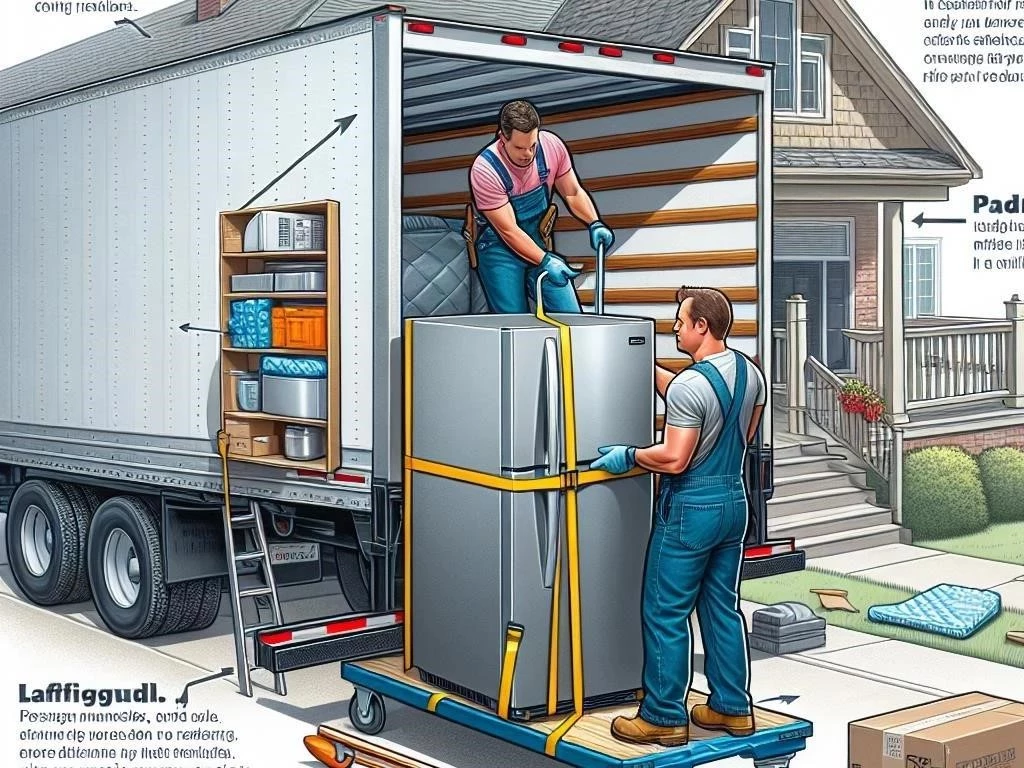
Emptying the fridge is the first crucial step before transporting it in a truck. Begin by removing all food items, beverages, and perishables to prevent spoilage and spills during the move. Check for any hidden items in drawers and compartments to ensure nothing is left behind. Additionally, consider donating or discarding items that are close to expiration. Once emptied, take out shelves and drawers if possible, as this will make the fridge lighter and easier to handle. Properly emptying the fridge sets the stage for secure packing and successful transportation.
4.2. Cleaning and Defrosting
Cleaning and defrosting the refrigerator is essential for safe transport. After emptying, unplug the appliance and allow it to defrost, enabling any ice buildup to melt. Place towels inside to absorb excess moisture, preventing leaks during relocation. Once the fridge is defrosted, thoroughly clean the interior surfaces using a mild detergent and water solution, eliminating odors and bacteria. Pay special attention to corners and crevices where residue can accumulate. After cleaning, ensure the interior is completely dry before proceeding, as this step significantly contributes to maintaining the appliance’s condition during transport.

4.3. Protecting the Interior
Protecting the interior of the refrigerator is crucial during transport to prevent damage. After cleaning and defrosting, place soft padding, such as towels or bubble wrap, on the shelves to absorb shock and minimize movement. Secure removable shelves and drawers with tape or packing materials to prevent them from shifting or breaking. Additionally, consider using plastic wrap to cover any delicate components and prevent scratches. Ensuring the interior is well-protected not only safeguards the appliance but also helps maintain its condition, allowing for efficient operation once reinstalled in your new location.
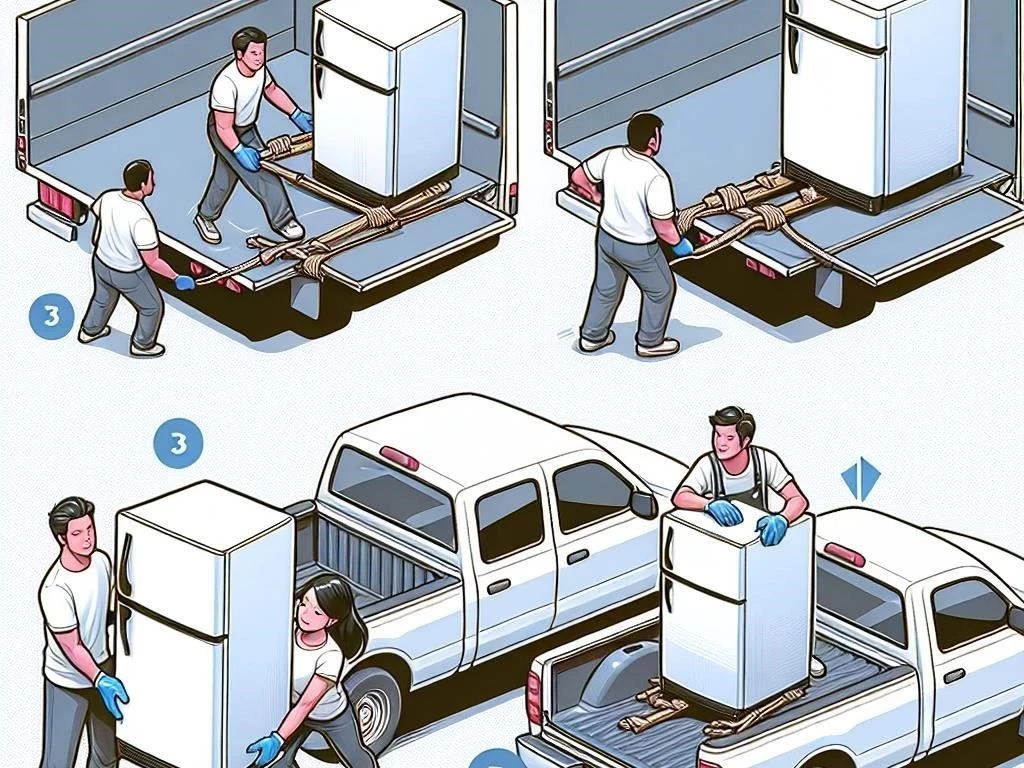
Securing the Refrigerator for Transport
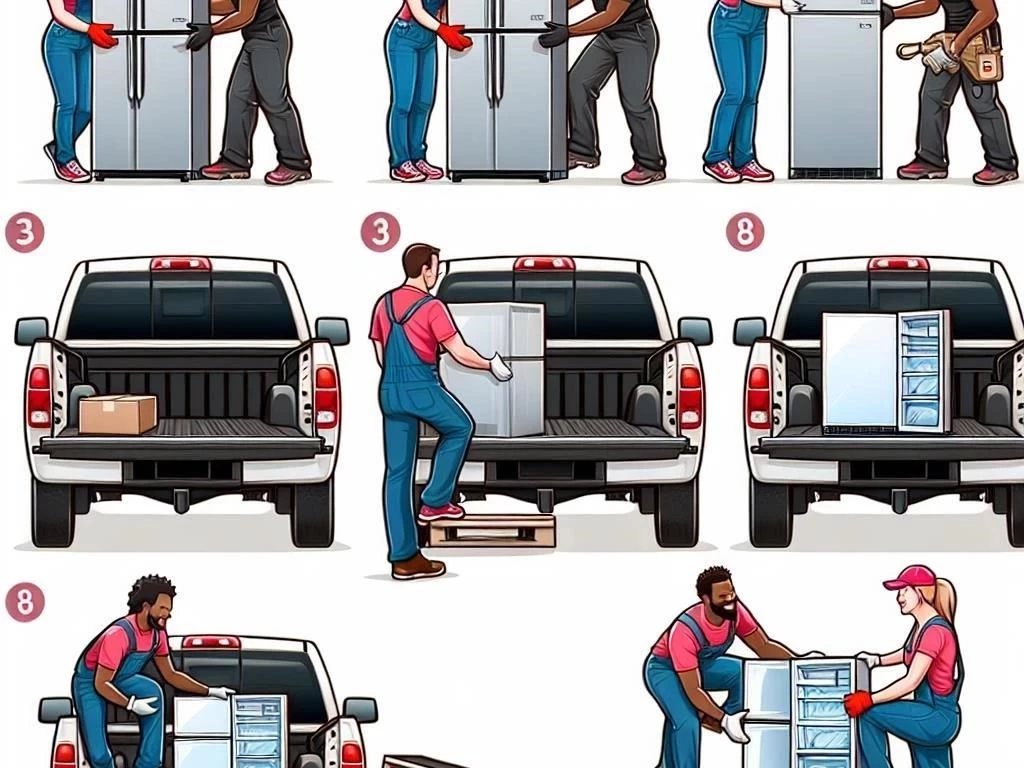
Securing the refrigerator for transport is vital to prevent damage during the move. Begin by utilizing a refrigerator dolly to lift the appliance carefully, maintaining its upright position. Once positioned on the dolly, use fridge straps to secure the refrigerator tightly, ensuring it remains stable while being moved. Additionally, consider using moving blankets or padding to protect the exterior from scratches and dents. Properly securing the fridge not only protects it from impacts but also ensures safe handling throughout the relocation process, minimizing the risk of accidents and damage during transport.
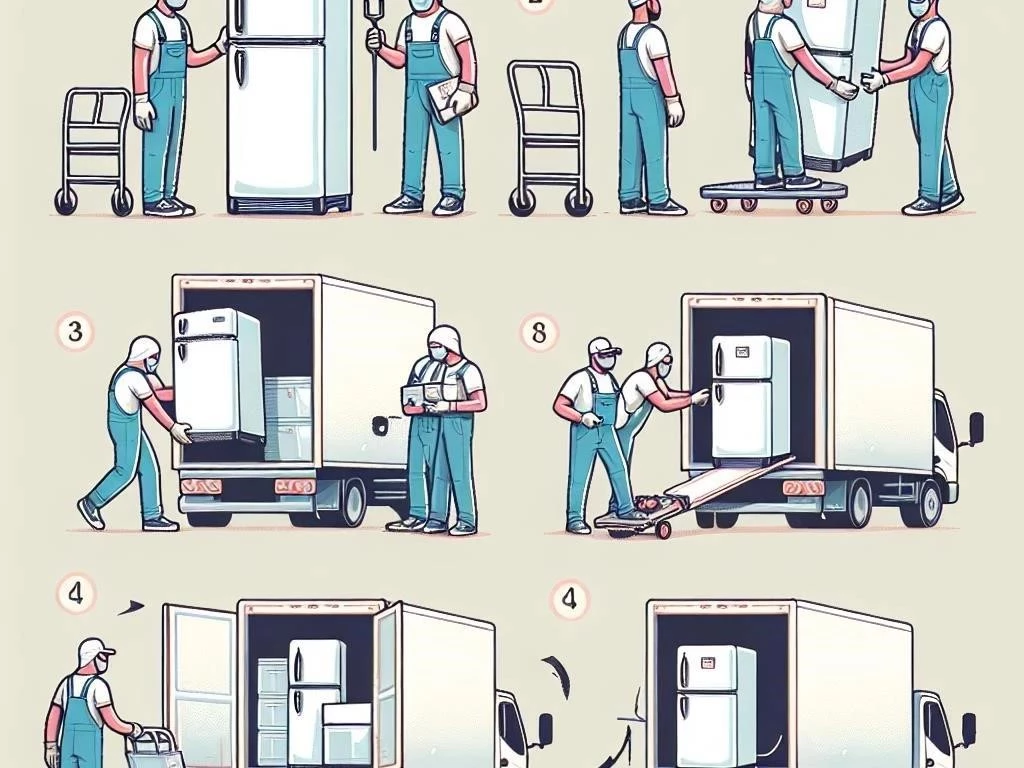
5.1. Using a Refrigerator Dolly
Using a refrigerator dolly is essential for safely moving your fridge during transport. Start by tilting the appliance gently backward, allowing the dolly to slide underneath. Ensure the fridge is centered on the dolly for balanced weight distribution. Secure the refrigerator with straps attached to the dolly, preventing it from falling off during movement. When navigating doorways or staircases, maintain a firm grip on the dolly and keep the fridge upright to avoid damaging internal components. This method significantly reduces the risk of injury and damage, facilitating a safer and more efficient relocation process.
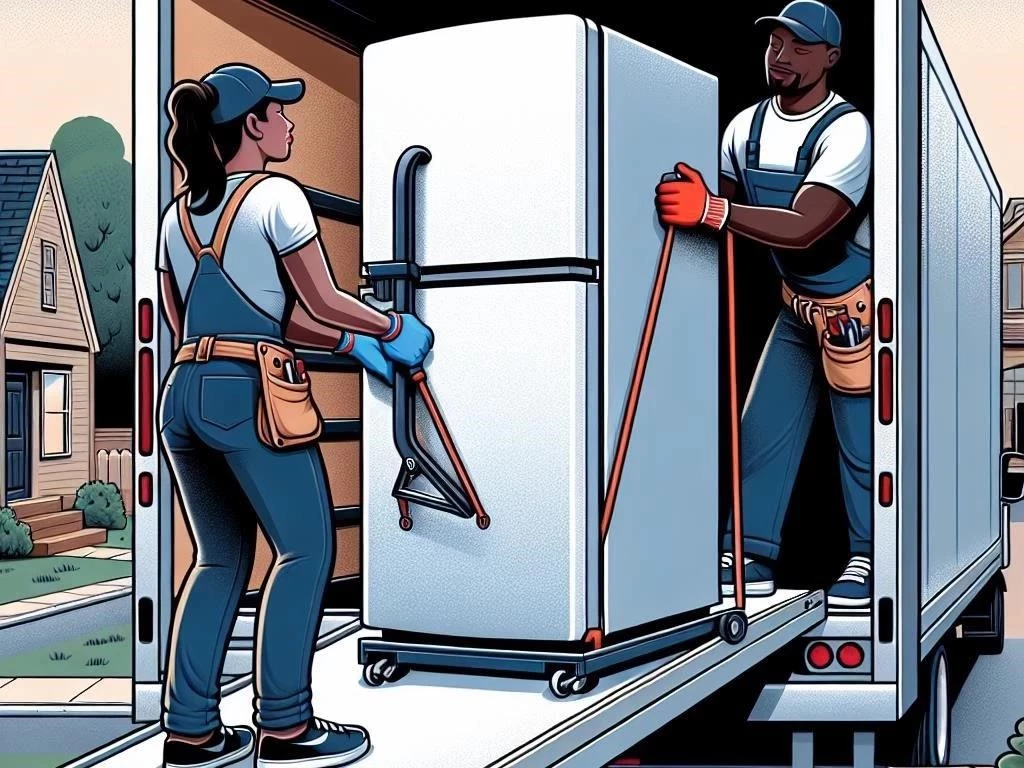
5.2. Safely Lifting and Moving
Safely lifting and moving the refrigerator is crucial to prevent injury and damage. Begin by enlisting help from at least one other person to share the load. Bend your knees and keep your back straight while lifting, using your legs to power the movement. Always lift from the lower part of the fridge, maintaining an upright position to avoid strain. When moving, take slow, deliberate steps, being cautious of door frames and uneven surfaces. Communicate clearly with your partner to coordinate movements, ensuring a safe and efficient transfer of the refrigerator to the truck.
5.3. Utilizing Fridge Straps
Utilizing fridge straps is essential for securing the refrigerator during transport. After loading the fridge into the truck, place the straps around the appliance, ensuring they are snug but not overly tight to avoid damage. Attach the straps to the truck’s anchor points, keeping the refrigerator stable and preventing movement while driving. Adjust the straps to ensure a proper fit, checking that they hold the fridge in an upright position. This added security minimizes the risk of shifting or tipping during transit, significantly enhancing transportation safety and protecting your valuable appliance from potential damage.
Truck Loading Tips for Efficient Space Management
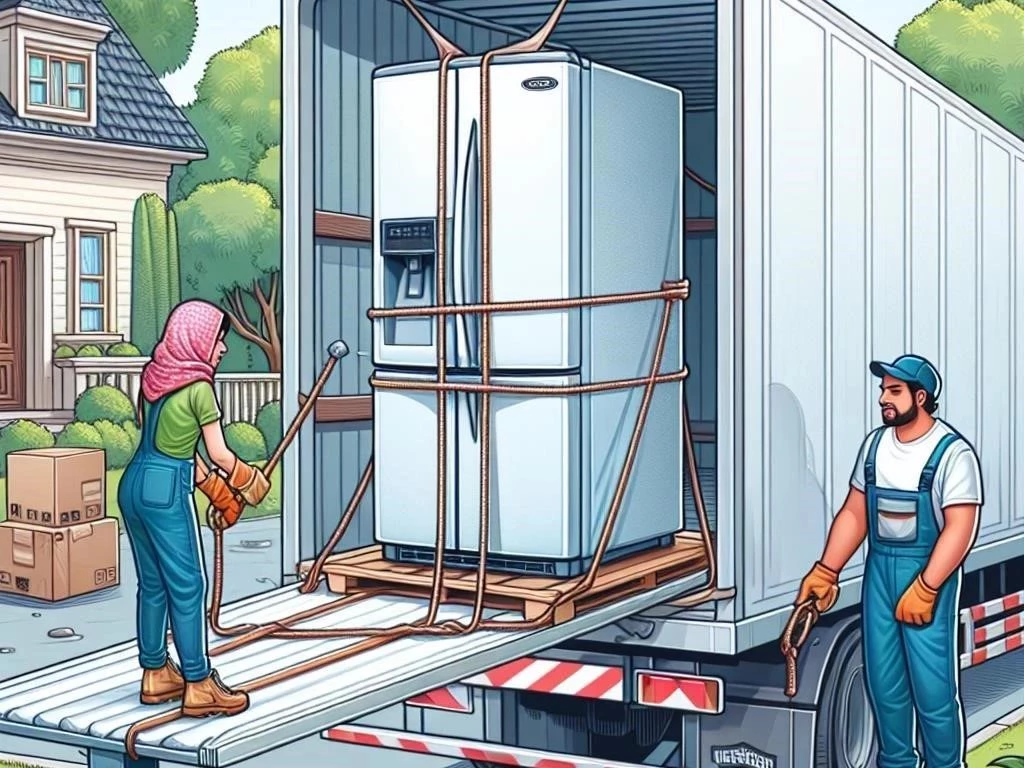
Efficient space management while loading the truck is essential for a successful refrigerator transport. Begin by planning the layout of the truck, dedicating the most stable area for the fridge. Position the refrigerator upright to avoid damaging internal components. Utilize available space effectively by stacking lighter items on top of heavier ones. Ensure that fragile items are secured away from the fridge to prevent potential damage. Additionally, leave enough room for easy access to the refrigerator during unloading. Proper space management not only ensures safety but also streamlines the moving process, enhancing overall efficiency.

6.1. Cargo Space Optimization
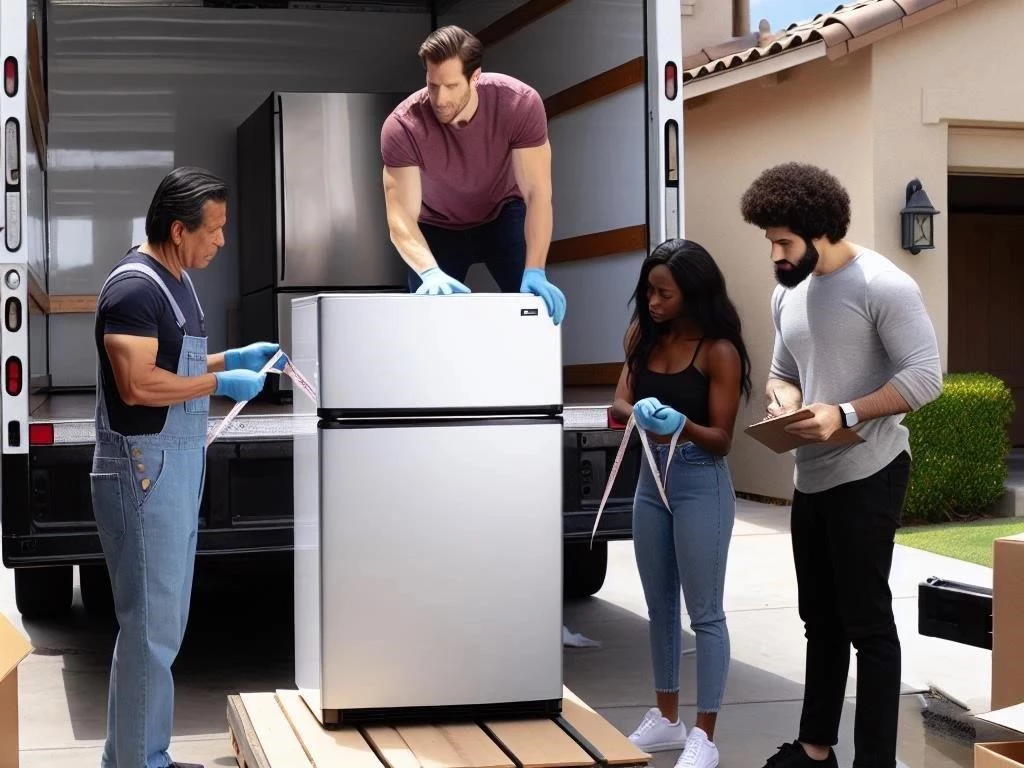
Optimizing cargo space is crucial when transporting a refrigerator in a truck. Begin by measuring the dimensions of the fridge and the truck’s interior to ensure a proper fit. Load the refrigerator first, positioning it securely against a wall or side to prevent movement. Utilize the remaining space by stacking smaller, lighter items around the fridge, carefully balancing weight to avoid shifting during transit. Consider using packing materials, such as blankets or bubble wrap, to fill gaps and prevent items from sliding. Effective cargo space optimization enhances safety and ensures a successful relocation experience.

6.2. Positioning the Fridge in the Truck
Positioning the refrigerator correctly in the truck is vital for safe transport. Always place the fridge in an upright position to prevent damage to the compressor and cooling system. Position it near the front of the truck, against a wall, to provide stability and minimize movement during transit. Ensure that the fridge is secured with straps or cargo nets to prevent it from shifting. Additionally, avoid placing heavy items on top of the refrigerator, as this could cause damage. Proper positioning enhances safety and ensures the fridge remains intact throughout the journey.

Transportation Safety Considerations

Transportation safety is paramount when moving a refrigerator in a truck. Ensure that the fridge is securely strapped and positioned upright to prevent tipping or shifting during transit. Regularly check the straps and load stability while driving, especially on rough terrain. Maintain a steady speed and avoid sudden stops or sharp turns to minimize movement. Additionally, communicate clearly with your helpers about any obstacles or changes during the journey. Adhering to these safety considerations helps prevent accidents, ensuring that the refrigerator arrives at its destination in perfect condition, ready for use.

7.1. Securing Loads During Transit
Securing loads during transit is essential for the safe transportation of a refrigerator. Begin by using heavy-duty straps or tie-downs to firmly anchor the fridge to the truck’s walls or floor. Ensure that the straps are tight and that the refrigerator is stable, preventing any movement. Utilize padding materials, such as blankets, to cushion the fridge and protect it from impacts. Regularly inspect the load during breaks to ensure that everything remains secure and stable. Properly securing the load minimizes the risk of accidents and damage, ensuring a smooth transportation experience.
7.2. Ensuring Stability in the Truck
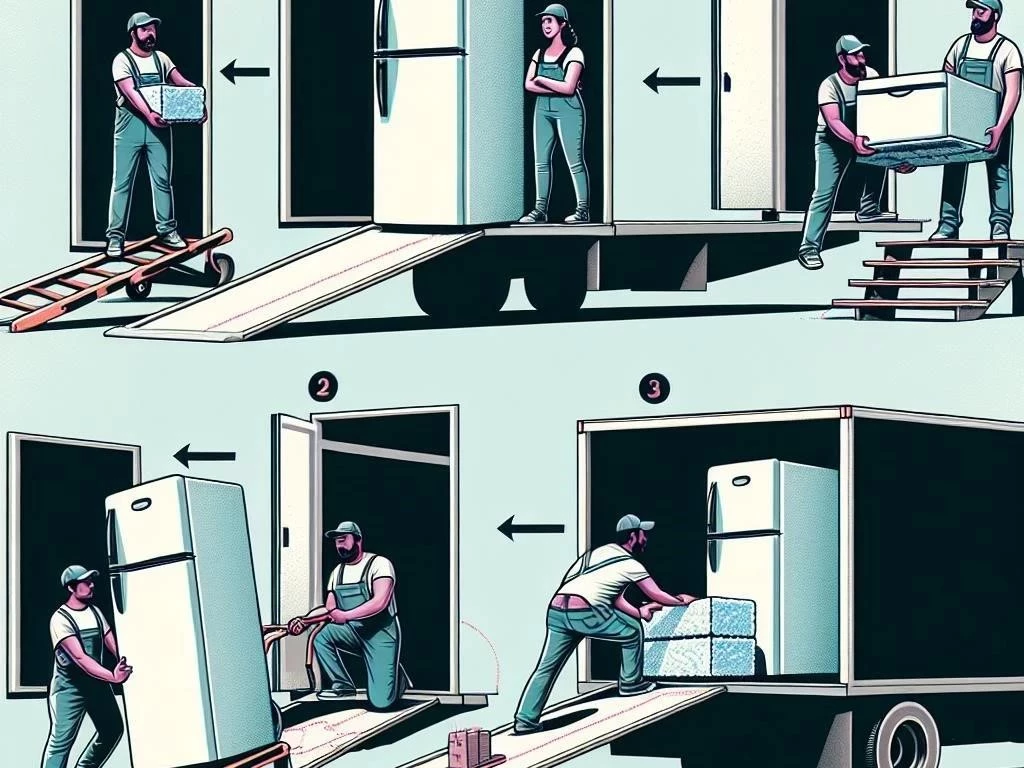
Ensuring stability in the truck is critical for transporting a refrigerator safely. Start by placing the fridge in a secure location, ideally against a wall to minimize movement. Use additional packing materials, such as foam or blankets, to fill any gaps between the fridge and the truck walls, preventing it from shifting. After securing with straps, double-check that the fridge remains upright and stable. Furthermore, avoid overloading the truck with items that could shift during transit, as this could compromise the refrigerator’s position. Proper stability enhances safety and protects your appliance effectively.
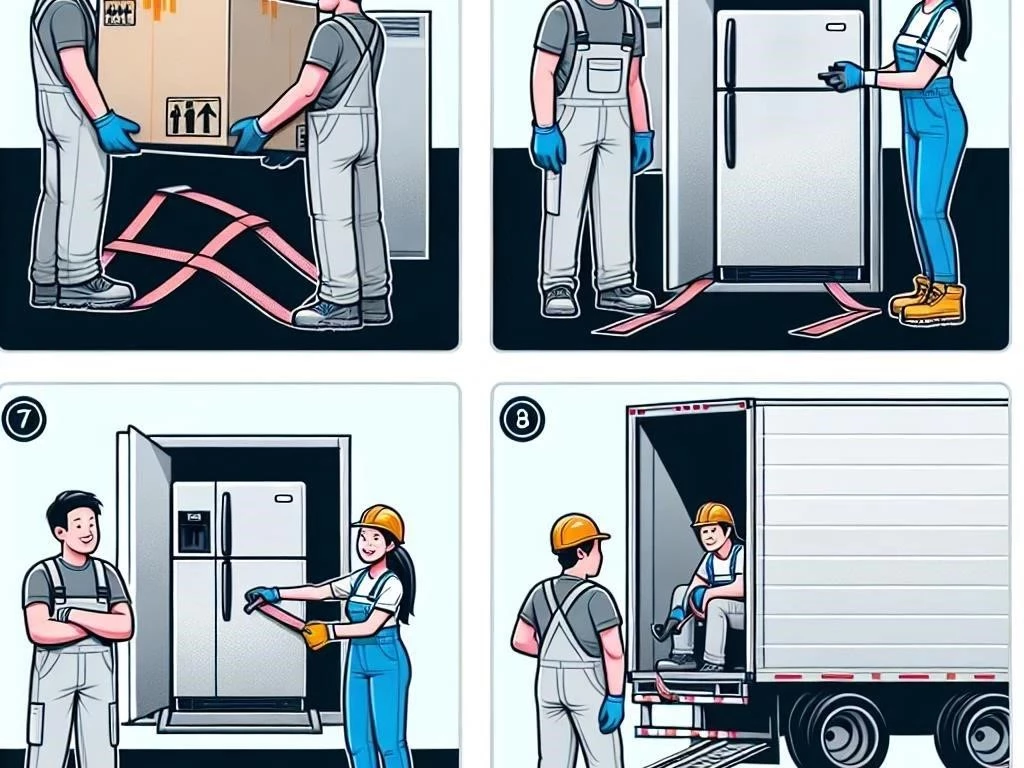
Refrigerator Installation After Transport

Installing the refrigerator after transport requires careful attention to detail for optimal performance. Begin by positioning the appliance in its designated location, ensuring adequate clearance on all sides for ventilation. Before plugging it in, allow the fridge to settle for at least a couple of hours, particularly if it was transported on its side. Next, reconnect the water supply line if applicable, and ensure all connections are secure. Finally, plug the refrigerator into an electrical outlet, setting the desired temperature and monitoring it for proper cooling. This process ensures efficient operation and longevity.
Relocation Tips for a Smooth Move
Relocation tips for a smooth move can greatly enhance your experience when transporting a refrigerator. Begin by planning your moving day meticulously, allowing ample time for packing and loading. Communicate with your moving team about the refrigerator’s dimensions and handling requirements. Use quality moving supplies to protect the appliance and other items. Prioritize organizing your truck space efficiently, placing the fridge in a stable position. Lastly, have a checklist ready to ensure all steps are followed, including installation at the new location. These tips will help facilitate a seamless refrigerator relocation process.
When to Consider Professional Movers
Considering professional movers becomes essential when transporting a refrigerator, especially for heavy or oversized models. If you’re unsure about handling the appliance safely or lack the necessary equipment, hiring experts can provide peace of mind. Additionally, if your new location involves stairs, tight spaces, or challenging access, professionals have the experience and tools to navigate these obstacles. Furthermore, if you’re short on time or managing a complex move, professional movers can streamline the process, ensuring your refrigerator is transported securely and efficiently, reducing the risk of damage during relocation.

Safely transporting your fridge requires careful planning and execution to ensure its integrity during the move. By following the outlined steps, from emptying and cleaning to securing and installing your appliance, you can significantly reduce the risk of damage. Utilizing proper moving equipment, such as dollies and straps, along with effective space management in the truck, enhances transportation safety. Always assess your capability to handle the task and consider professional movers if needed. Ultimately, taking these precautions guarantees that your refrigerator arrives at its new location in optimal condition, ready for use.
